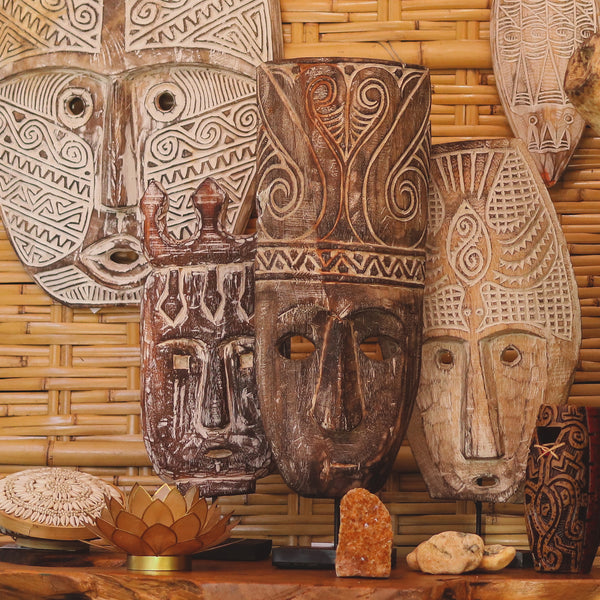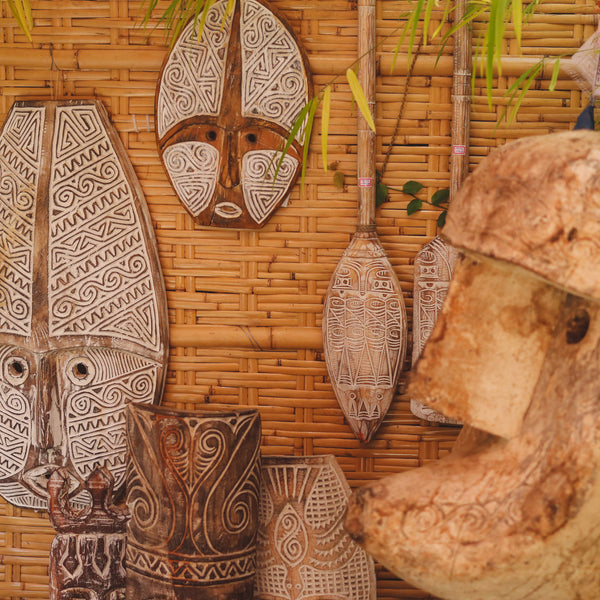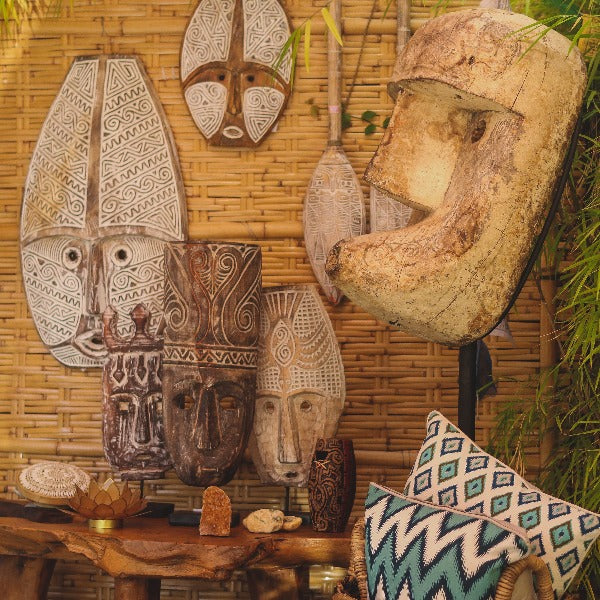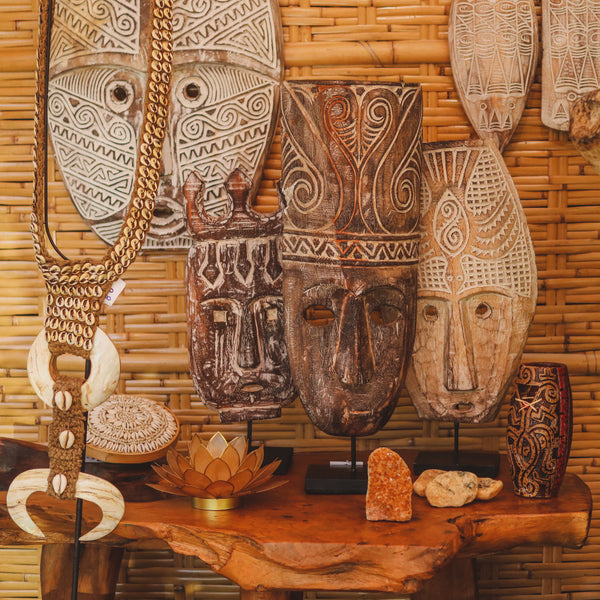In the Far East, an island surrounded by natural beauties grows due to the cultural richness of its native peoples. This is Timor Leste ( East Timor ), a paradise framed by the sea whose diversity of the Timorese people is manifested and valued through cultural artifacts. Wooden figurines and masks are the most prestigious ritualistic arts for evoking the powers of ancestral spirits. This strong connection with ancestry is reflected in the aesthetics of the pieces influenced by marks in nature, due to the rock engravings and stone carvings that date back more than 10,000 years and decorate the walls of caves such as Lene Hara .
Through wood carving, traditionally an exclusive trade of Timorese men, the decoration of environments claims good fluids and prosperity to the deities and totemic spirits of Timor. Both the worship of the ancestors and the belief in animism expressed in the details of the decorative masks , in the style of the ethnic sculptures , in the geometry of the mandalas and the wooden panels, give the interiors an original ethnic aesthetic with an artistic essence.
East Timor cultural art history

East Timor retains the essence of ancestral beliefs in its historic arts.
The decorative arts of East Timorese artisans essentially maintain the beliefs of ancient Timorese ethnic groups such as the Atoni people. They represent the cultural resistance of the native ethnic groups to the different historical moments experienced by the population of Timor; from the mercantile influence of China and India , through European colonization (Dutch and Portuguese) in 1515 to the later Indonesian invasion in 1975.
The petroglyphs of the karst caves of Lena Hara , Ile Kére Kére and Jerimalai are the main evidence of human colonization in East Timor , occupied 35,000 years ago, and also the main artistic inspirations for the geometric motifs carved in wood art. Animals, vessels and human figures were carved into the stones, painted with ocher and stamped with the most primitive stencil by hand. Both the ancestral sculptures ( Itaras ) and the stylized stone faces were representations of deities and important figures who died, forming the only late Pleistocene rock art in all of Southeast Asia.
Ethnic drawings of the Timorese cultural memory

Ethnic-style motifs revisit ancient beliefs and rock art from Timor's caves.
The traditional motifs that make contemporary Timorese decorative masks unique are inspired by totemic arts and ornate rock carvings , as well as the structure of the piece itself, with traits close to the faces of ancestors engraved on the stones. Characterized by geometric elements , the Timorese motifs refer to the stylistic particularities of Australian Aboriginals, connecting the primitive paintings of Timor to Lapita art or Austronesian art .
The ethnic designs that stylize the surfaces of the masks are made up of spirals and triangular patterns that create a relief that is quite original and integrated with the tribal ancestry of the island. When present in interior decoration , ethnic masks transform the Timorese cultural memory into a differentiating component in the environment. The decorative design elaborated with the woodcarving technique gives more expressiveness to the sculptures, panels, mandalas and masks, especially if they are personalized with a patina that reinforces the aged tone of the aesthetics through the painting.
Art of carving in different types of wood

Teak wood is one of the most common raw materials for ethnic masks.
Teak , eucalyptus, red cedar and palm are the main raw materials for the figurines and decorative masks developed by Timorese artisans. Resistance and natural coloring, among other particularities, influence the final finish of rustic wood and help to maintain in the final piece the primitive energy that vibrates in tribal motifs . Despite the visual weight, wood art like this is supported on metal bases or hung on the wall. This attribute of the material transforms the piece into a versatile decorative object.
The patina and antik paint create an aging effect of ethnic arts, highlighting the tribal designs carved into the wood and the dramatic faces of the masks and sculptures . The surface of the pieces also maintains a rustic style that integrates an unpretentious air into the works, as if they were really old and used for ritualistic purposes. Even so, nothing prevents you from using them in wall decoration as protective amulets against evil spirits and negative energies, just as they served the Timorese ancestors.
Ethnic : adding historical value to decoration

The patina paint helps to highlight the graphics that characterize the East Timor style.
By intimately touching the essence of environments, East Timor 's cultural arts show that ethnic style is extremely diverse and rich. They contemplate the decor with the warm touch of rustic wood, whose geometric graphics highlighted by the patina painting anchor historical and cultural value to the best East Timor style . If you look back at life on the island, you will find a link to create harmonious and authentic environments like Timorese pieces.
While pieces connected with the sea, such as necklaces with natural fibers, boxes with shells and oars , warm the space even more, evoking the coastal naturalness and tropicality; pieces that embrace the spiritual connection, such as lotus flower candle holders and stones, convert the composition with the masks into a mystical place for contemplation. And even unique in minimalist interiors, Timorese pieces show excellent statements with their unparalleled textures of ancient perfume.
Be sure to check out the cultural beauties of Timor in our online store !
Namaste!
Milene Sousa - Art & Tune















1 comment
artesenato timorense